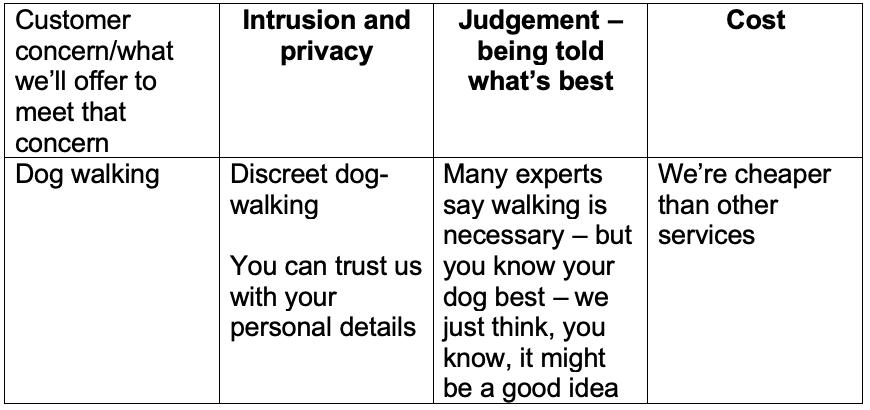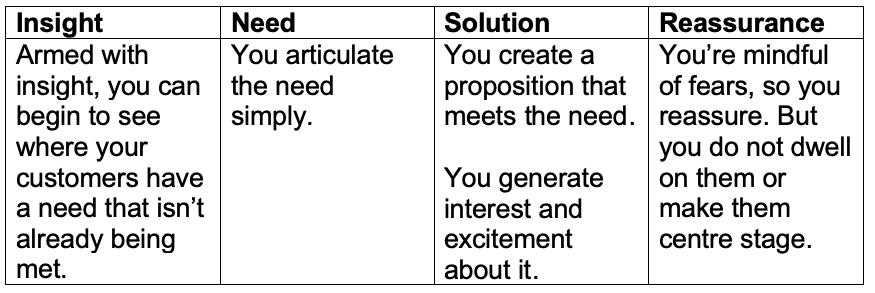
Let’s imagine there’s a petshop called Fluffy Pups. It has an enviable client base and it’s selling tons of products. People know that Fluffy Pups only supplies the best, most nutritious food. They know that the Fluffy Pups team are experts who’ll never let them down. They know Fluffy Pups accessories are long-lasting and safe. Fluffy Pups customers buy everything from Fluffy Pups because they trust them and there’s no need to go elsewhere.
It’s time to grow – to sell Fluffy Pups customers more things. Things, perhaps, they never even knew they wanted.
The Fluffy Pups management team thinks it might be a good idea to launch a dog walking service.
The FP team sits down around a table to discuss the new idea. The team is worried.
“Our customers will think we’re saying they’re not looking after their dogs properly,” says one person.
The reasons why customers may not want this service begin to come thick and fast:
- They may not want to give us keys to their home
- They might think we’re the dog police and we’re going to report them to the RSPCA
- They’ll worry that their dog will like their walker better than it likes them
- They’ll think it costs too much
The FP management team takes notes because this is an inclusive environment where everyone gets a say. And these, after all, are valid points.
It draws up this table so they’ll say the right things about their new services and not offend anyone:

Marketers reading this will think, that’s daft. No-one would do that.
But over the past couple of years, we’ve worked with a number of organisations doing very similar things. We’ve seen whole portfolios built directly to correspond to customer fears. And what you end up with is strange, overlapping propositions that confuse customers. Often, one proposition can look almost identical to the next, but has been separated out because it addresses a different fear.
“Can you wordsmith it so that they stand out as distinct and separate propositions?” a client might ask. And of course we can (though, just for the record, we blinking hate the word “wordsmith”). But customers aren’t stupid, and they’ll very quickly ask themselves why two very similar things are being described in such different ways.
Internally, concentrating on fears can be destructive too. It begins to cast customers in a strange light. By concentrating on fears, Fluffy Pups has unintentionally begun to paint a picture of its customers as paranoid, fussy weirdos.
By taking this approach, another company in another sector might equally paint a picture of their customers as bumbling technophobes, rather than people who are just looking for simplicity.
Customer fears – or the things that get in the way of them adopting your new products or services – are important. But they’re not fundamental – and they shouldn’t be treated as such. The only fundamental is what a customer actually, truly needs.
In the Fluffy Pups scenario, the management team should have started with a need, based on insight, for example:

In this way, they’ve been mindful of the barriers their customers might have to adopting the new service, and they’ve offered reassurance.
But the whole concept is based on a need, rather than what might put customers off.
The model, we think, works like this:

And remember, customers may not know that the thing you could offer is even possible, so don’t just ask customers what they need. Instead, talk to them generally about life, any pressures they face, what makes them happy.
Most of all, listen to their fears, but don’t build whole strategies around them.
Want to learn more about customers? You might find these links useful:
